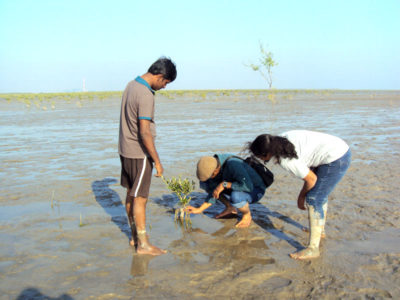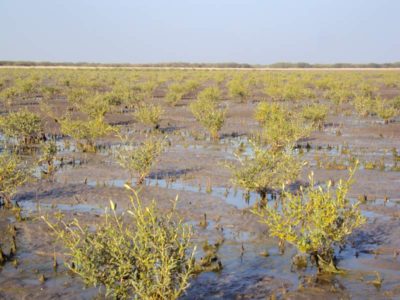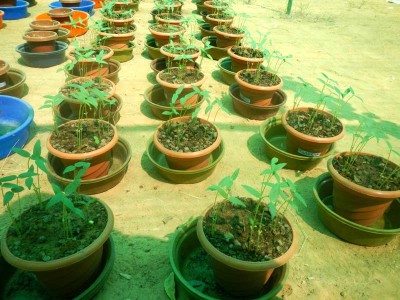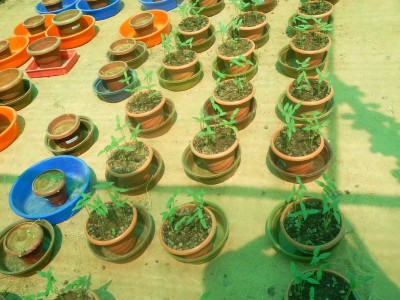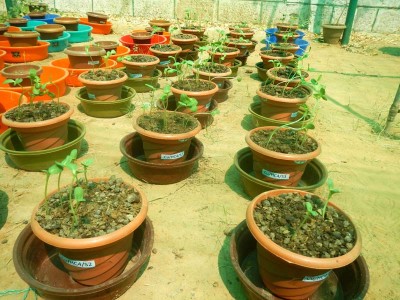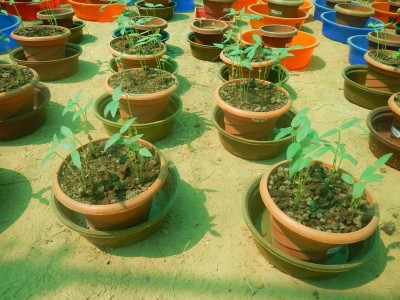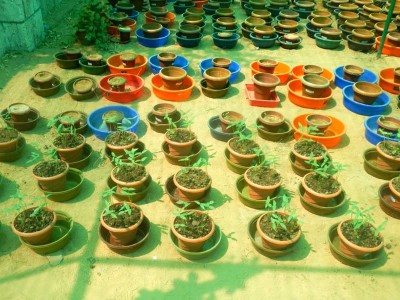Restoration Ecology: Bioremediation, Phytomining
There is consensus among the scientific fraternity about the significant environmental degradation and destruction of biota. Studies have reported that species extinction is much higher currently than earlier. Habitat loss is the foremost reason of both species extinction and ecosystem services decline. Thus, we, human beings ought to take the responsibility to conserve the biological diversity. The two ways to reverse this trend of habitat loss are conservation of currently viable habitat and restoration of the degraded ones.
India, with merely 2.4% of the world’s geographical area has 16.7% of the world’s population. With 0.5% of world’s grazing land India supports 18% of the world’s cattle population. This has resulted in pressures on the land resource often beyond its resilience capacity. Our lack of understanding and awareness on conserving the natural resources has led to their exploitation beyond the carrying capacity. Subsequently, the productive lands in India are in constant process of various degrees of degradation and are turning into unproductive wastelands.
GUIDE, owing to its existence in an arid region of Gujarat well understands the importance of both conservation and restoration. Since it’s inception, GUIDE is working on ecological restoration leading to the recovery of degraded ecosystems. GUIDE initiated working on the restoration of the following ecosystems of Gujarat which are also integral part of Kachchh landscape:
- Mangroves
- Grasslands
- Mined out sites and other degraded lands, and
- Saline and marshy deserts (Rann)
Mangroves
Mangroves are complex ecosystems that provide coastal bioshield to habitats and societies from natural disasters. Mangrove ecosystems, making up less than 0.4% of the world’s forests, are being lost at the rate of 1% per year and in some areas the rate of mangrove loss is between 2 and 8% per year. The mangrove loss has been high in most of the developing countries for the want of space to accommodate coastal and maritime development activities. Given their accelerating rate of loss, mangrove forest may at least functionally disappear in as little as 100 years. Thus, GUIDE aim’s at restoring mangroves for ecosystem services it provides. GUIDE has been undertaking long-term studies on restoration of mangrove habitats at several locations along Gulf of Kachchh and other parts of Gujarat.
Various techniques are being used by our team members for restoring these sites. For raising the mangrove plantations three different methods viz., Nursery raised saplings transplantation, Raised Bed (Otla) method, and Direct dibbling of seeds/propagules are being followed. With great scientific understanding and continuous efforts, GUIDE has achieved outstanding survival rate for Avicennia marina along Kachchh coast. GUIDE team with its sincere efforts to restore the mangrove ecosystem, also ventured into renaissance of Rhizophora mucronata and Ceriops tagal.
Grasslands
In India, grasslands are mainly found in Gujarat, Rajasthan, Maharashtra, Madhya Pradesh, Uttar Pradesh and Brahmaputra valley. Kachchh, though falling in the arid region, harbors two large grasslands viz., the Banni and the Nailya. Inherent salinity in Kachchh grasslands is a major problem which is further aggravated due to climatic conditions. On top of this, Kachchh region has the maximum livestock population in Gujarat state. Consequently, Kachchh rangelands experience extreme grazing pressure beyond the carrying capacity as the fodder requirement cannot be met from the existing grassland resources. Over few decades invasion by Prosopis juliflora in Banni grassland and high salinity have put the entire ecosystem’s health at risk as they remain threat to the integrity and function of ecosystems. As a consequence of high salinity, enormous grazing pressures and P. juliflora infestation, these grasslands have reduced fodder availability for the livestock. The grassland of Naliya is a breeding ground for the endangered Great Indian Bustard (GIB). Thus, loss of grassland habitat has impounding grazing pressures and is foreseen as a threat to this species. GUIDE, being the leading research organization in this region, has restored ‘thousands of hectares’ of grassland to improve the onsite productivity by growing fodder species following technological interventions to reduce competition in overgrazing while safeguarding biodiversity. This is with an attempt to restore the grasslands of Banni and Naliya to their normalcy, and maintain their ecological integrity.
Mined out sites, and other degraded lands
Mined out sites: Kachchh and Saurashtra are the main regions in Gujarat, which are bestowed with rich mineral resources. Gujarat Mineral Development Corporation (GMDC) is engaged in tapping major mineral resources especially lignite in Panandhro and Mata-Na-Math in western Kachchh region. Soil destruction due to mining results in a permanent reduction of soil productivity.
Other degraded lands: Most of the hilly tracts of the Kachchh region are either devoid of vegetation or degraded due to various reasons. Geomorphology also plays a major role in contributing to the vegetation or landforms.
Assessing and reclaiming mined out sites, and other degraded lands need thorough understanding of several factors governing growth. Thus, restoration following advanced technologies becomes imperative. Accordingly, restoration needs holistic approach wherein both laboratory and field restoration techniques could be an integral part. Thus, GUIDE is exploring the potential of both plant species and microbial diversity following ex-situ experiments and in-situ trials to restore such degraded lands. All such interventions have helped in developing ground cover and reducing salinity ingression in the region. With it’s vast experience in restoration ecology, GUIDE now looks forward to expand its expertise at national level and has thus accordingly received research funds from various organizations (national and international level).
Saline and marshy deserts
Great Rann of Kachchh (GRK) and Little Rann of Kachchh (LRK) were once a part of the shallow Arabian Sea. LRK, having unique fascinating wildlife, is a south-easterly extension of the larger GRK, which separates the Kachchh region of Gujarat from Sindh in Pakistan and mainland of Gujarat. LRK is the only habitat for remnant Indian Wild Ass population, and only place other than GRK where nesting of flamingo is recorded in the country. The Rann is a unique ecosystem with soil encrustations and saline marshes. Nevertheless, this has adversely impacted the biodiversity of the area. Intensive agriculture, water logging coupled with high evapo-transpiration, capillary action creating salt-wastes in the depressions and salt pans at the periphery of the Rann are major factors causing salinity in the Kachchh area. Thus, it is vital to identify practical models to enhance the biodiversity value while conserving this unique ecosystem of Rann. This in turn would require identifying the influencing factors that will improve soil quality while keeping ecological balance intact.
Saline and marshy desert areas are unique ecosystem with extreme environmental condition thus resulting in the survival of only few biological species. Study of such environment is essential as microbes in such adverse environmental conditions (Extremophiles) are adapted to stress conditions. Thus, microbial diversity is of significance for soil productivity in general and such harsh conditions in particular. GUIDE has also made attempts to restore some of the byets in GRK, through sustainable ecological interventions on pilot scale. This included soil moisture conservation, enhancing ground vegetation cover, mostly grass cover etc. With the success of such intervention, and the lessons learnt during the pilot scale experiment, GUIDE intends to upscale such experiments to other parts of Great Rann of Kachchh and Little Rann of Kachchh. This will facilitate restoring all the byets in both GRK and LRK.

